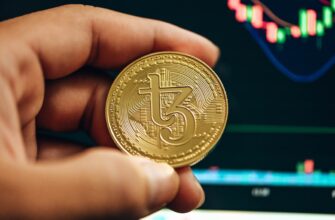- Introduction: Decoding the Buzz Around NFTs
- What is an NFT? Unpacking the Core Concept
- How Do NFTs Work? The Blockchain Backbone
- Why Are NFTs Valuable? Scarcity, Utility, and Culture
- Top NFT Use Cases: Beyond Digital Art
- How to Buy and Sell NFTs: A Beginner’s Roadmap
- NFT FAQ: Quick Answers to Common Questions
- Conclusion: The Future of Digital Ownership
Introduction: Decoding the Buzz Around NFTs
If you’ve heard the term “NFT” buzzing through tech and finance circles but wondered about the crypto NFT meaning, you’re not alone. Non-Fungible Tokens (NFTs) represent a revolutionary shift in digital ownership, powered by blockchain technology. Unlike cryptocurrencies like Bitcoin, which are interchangeable, NFTs are unique digital assets that verify authenticity and ownership. From multi-million-dollar digital art to virtual real estate, NFTs are reshaping how we value and trade digital content. This guide breaks down everything you need to know about NFTs—how they work, why they matter, and how to navigate this dynamic space.
What is an NFT? Unpacking the Core Concept
An NFT, or Non-Fungible Token, is a one-of-a-kind digital asset stored on a blockchain. The term “non-fungible” means it cannot be replaced or exchanged equally—unlike money or cryptocurrencies. For example, while one Bitcoin equals another Bitcoin, each NFT has distinct properties making it irreplaceable. Think of it as a digital certificate of authenticity for anything from artwork to music files. Key characteristics include:
- Uniqueness: Every NFT has metadata that differentiates it from others.
- Indivisibility: NFTs can’t be split into smaller units like crypto coins.
- Ownership Proof: Blockchain records verify who owns the asset transparently.
This innovation solves a critical digital-era problem: proving scarcity and ownership in a world where content is easily copied.
How Do NFTs Work? The Blockchain Backbone
NFTs operate on blockchain networks like Ethereum, Solana, or Polygon, using smart contracts to automate ownership transfers. Here’s a simplified breakdown:
- Creation (Minting): An artist or creator uploads a digital file to an NFT platform, generating a unique token on the blockchain.
- Verification: The blockchain logs the NFT’s details—creator, ownership history, and traits—in an immutable ledger.
- Transactions: When sold, smart contracts execute the transfer, updating ownership records instantly.
This system ensures transparency and security, eliminating counterfeits. Energy-efficient blockchains like Tezos now address early environmental concerns tied to Ethereum’s proof-of-work model.
Why Are NFTs Valuable? Scarcity, Utility, and Culture
NFTs derive value from three key pillars:
- Scarcity: Limited editions (e.g., 1/1 or 10,000 pieces) create collectible demand.
- Utility: Some NFTs unlock real-world perks, like concert tickets or exclusive community access.
- Cultural Significance: Projects like Bored Ape Yacht Club blend art with social status, driving speculative interest.
Unlike physical assets, NFTs also enable ongoing royalties for creators through automated smart contracts—a game-changer for artists.
Top NFT Use Cases: Beyond Digital Art
While art dominates headlines, NFTs have diverse applications:
- Collectibles: NBA Top Shot moments or CryptoPunks.
- Gaming: Tradeable in-game items (e.g., Axie Infinity characters).
- Virtual Real Estate: Land parcels in metaverses like Decentraland.
- Identity & Certification: Digital passports or academic credentials.
- Music & Media: Royalty-sharing albums or film rights.
How to Buy and Sell NFTs: A Beginner’s Roadmap
Ready to dive in? Follow these steps:
- Set up a crypto wallet (e.g., MetaMask) and fund it with Ethereum or Solana.
- Choose a marketplace: OpenSea (general), Rarible (creator-focused), or Magic Eden (Solana-based).
- Connect your wallet, browse collections, and bid or buy instantly.
- To sell, mint your NFT or list an existing one—set prices or enable auctions.
Tip: Research projects thoroughly—scams and volatility are real risks.
NFT FAQ: Quick Answers to Common Questions
Q: What does “non-fungible” mean in crypto?
A: It signifies uniqueness. Unlike fungible assets (e.g., dollars or Bitcoin), each NFT is distinct and can’t be swapped like-for-like.
Q: Are NFTs cryptocurrencies?
A: No. NFTs are digital assets using blockchain (like crypto), but they represent ownership of unique items rather than currency.
Q: How do I create an NFT?
A: Upload digital content (art, music, etc.) to platforms like Rarible or Mintable. Pay a “gas fee” (blockchain transaction cost) to mint it.
Q: What are the risks of NFTs?
A> Key risks include market volatility, copyright infringement, scams, and potential environmental impact from energy-intensive blockchains.
Conclusion: The Future of Digital Ownership
Understanding the crypto NFT meaning reveals more than a trend—it’s a foundational shift toward verifiable digital ownership. As industries from gaming to real estate adopt NFTs, their utility will expand beyond speculation. While risks exist, the technology empowers creators and collectors alike. Stay informed, prioritize security, and explore this evolving space with curiosity. The next chapter of the internet—Web3—is being written token by token.








